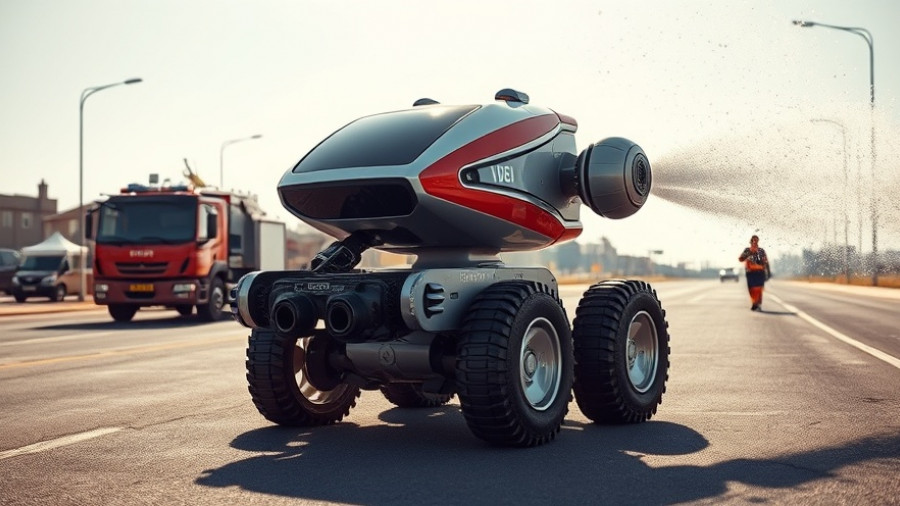
A Revolutionary Approach to Firefighting with Robotics
In an age where technology continues to reshape industries, the introduction of the $150k B2 robodog signals a remarkable shift in firefighting tactics. Developed by Teddy Haggerty of Unitree Robotics, based in Long Island, this innovative machine represents a cutting-edge solution to pressing fire safety challenges, especially in urban environments. As climate change causes wildfires to intensify and household fires to become more hazardous, the need for advanced tools is more crucial than ever.
Why Firefighters Need the B2 Robodog
Firefighters face incredible dangers while combating flames, particularly during high-risk situations exacerbated by modern materials in our homes. The B2, standing three feet tall and weighing 150 pounds, is engineered to operate under extreme heat, withstanding temperatures up to 572 degrees Fahrenheit. Equipped with a powerful water cannon that can blast flames from up to 100 feet away, it drastically reduces the risk of injury to human firefighters while delivering a high level of operational efficiency.
Technological Advantages of the B2
The B2's capabilities extend beyond fire extinguishing; it features thermal imaging sensors that enable it to identify trapped persons within smoke-filled buildings. This dual function of firefighting and situational awareness has the potential to save lives. As Plainview Fire Chief Chris Steel pointed out, the B2's utility could allow volunteers to focus on rescue instead of putting their lives at risk in search operations.
Improving Response Times with Advanced Robotics
Fire response times have a direct correlation with survival rates; thus, innovations like the Unitree B2 that facilitate faster assessment and intervention are invaluable. According to industry experts, using drones and firefighting robots can shorten emergency response times significantly. For instance, two variants of firefighting robots recently showcased in action reportedly reduced assessment time by as much as 50% compared to traditional methods.
How Robotics Transform Firefighting Strategies
Unitree robotics, like the B2, not only reduce human risk but also enhance the overall speed and accuracy of fire responses. These machines are equipped to navigate difficult terrains, allowing them to access areas that might be too dangerous for human crews. This technology also frees up firefighters to focus on strategic decision-making rather than manual tasks, thus increasing the effectiveness of fire response operations.
Community Impact and Future Prospects
The deployment of the B2 robodog not only promises immediate benefits for fire departments but also has implications for the broader community. Council Member Ken Rothwell noted that operational efficiencies could ultimately save counties money by alleviating the strain on volunteer departments suffering from member shortages. As cities explore ways to implement these advancements, there are also job creation opportunities linked to technology maintenance and adaptation.
Addressing Concerns of Job Displacement
Critics of robotics in the firefighting field often express concern about potential job displacement; however, there’s a growing acknowledgement that these technologies serve to enhance, not replace, human work. The primary aim of the B2 and similar devices is to handle the most dangerous tasks, allowing trained professionals to engage in safer, more analytical roles.
Taking Action: How to Get Involved
As the prospect of incorporating advanced robotics into firefighting strategies grows near, communities should advocate for local investment in technologies like the B2 robodog. Such innovations represent not just advancements in equipment but reflections of a commitment to public safety. If you want to share your thoughts or learn more about these developments in your area, don't hesitate to reach out to us at team@kansascitythrive.com.
 Add Row
Add Row  Add
Add 





Write A Comment